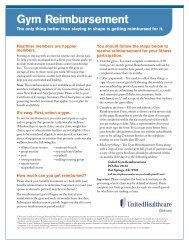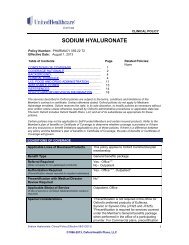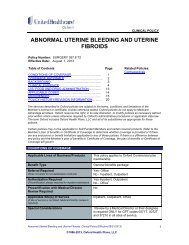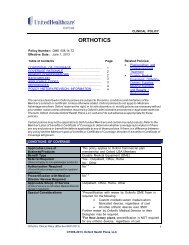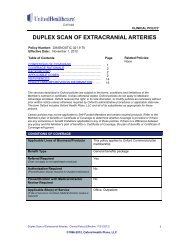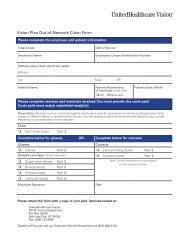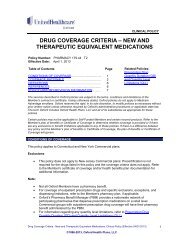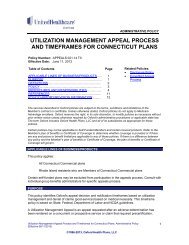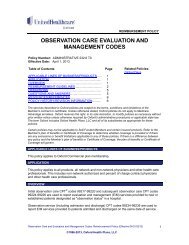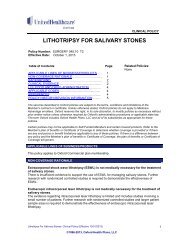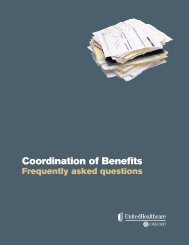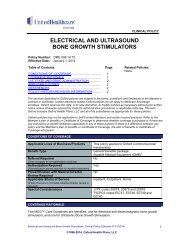STELARA (USTEKINUMAB) - Oxford Health Plans
STELARA (USTEKINUMAB) - Oxford Health Plans
STELARA (USTEKINUMAB) - Oxford Health Plans
You also want an ePaper? Increase the reach of your titles
YUMPU automatically turns print PDFs into web optimized ePapers that Google loves.
For Information regarding coverage for Enbrel, Humira, Kineret, Cimzia, Simponi, and<br />
Orencia (subcutaneous formulation), refer to: Biologics in the Treatment of Skin, Joint<br />
and Gastrointestinal Conditions.<br />
Some states mandate benefit coverage for off-label use of medications for some<br />
diagnoses or under some circumstances. Some states also mandate usage of other<br />
Compendium references. Where such mandates apply, they supersede language in the<br />
benefit document or in the notification criteria.<br />
BACKGROUND<br />
Ustekinumab is a human IgG1κ monoclonal antibody that binds with high affinity and specificity to<br />
the p40 protein subunit used by both the interleukin (IL)-12 and IL-23 naturally occurring<br />
cytokines. IL-12 and IL-23 are involved in inflammatory and immune responses, such as natural<br />
killer cell activation and CD4+ T-cell differentiation and activation. 1<br />
CLINICAL EVIDENCE<br />
Medically Necessary Use:<br />
Plaque Psoriasis<br />
Two multicenter, randomized, double-blind, placebo-controlled studies (PHOENIX-1 and<br />
PHOENIX-2) were considered in the approval of ustekinumab for the treatment of plaque<br />
psoriasis. 1 Enrollment consisted of a total of 1996 subjects 18 years of age and older with plaque<br />
psoriasis who had a minimum body surface area involvement of 10%, and Psoriasis Area and<br />
Severity Index (PASI) score ≥12, and who were candidates for phototherapy or systemic therapy.<br />
Subjects with guttate, erythrodermic, or pustular psoriasis were excluded from the studies.<br />
Leonardi et al. conducted a phase III, parallel, double-blind, placebo-controlled study (PHOENIX-<br />
1) in 766 patients with moderate-to-severe psoriasis. 8 Subjects were randomly assigned to<br />
receive ustekinumab 45 mg (n=255) or 90 mg (n=256) at weeks 0 and 4 and then every 12<br />
weeks; or placebo (n=255) at weeks 0 and 4, with subsequent crossover to ustekinumab at week<br />
12. Patients who were initially randomized to receive ustekinumab at week 0 and achieved longterm<br />
response (at least 75% improvement in psoriasis area and severity index [PASI 75] at weeks<br />
28 and 40) were randomized a second time at week 40 to maintenance ustekinumab or<br />
withdrawal from treatment until loss of response. The primary endpoint was the proportion of<br />
patients achieving PASI 75 at week 12. Analyses were by intent to treat and resulted in the<br />
following: 171 (67·1%) patients receiving ustekinumab 45 mg, 170 (66·4%) receiving ustekinumab<br />
90 mg, and eight (3·1%) receiving placebo achieved PASI 75 at week 12 (difference in response<br />
rate vs placebo 63·9%, 95% CI 57·8–70·1, p



